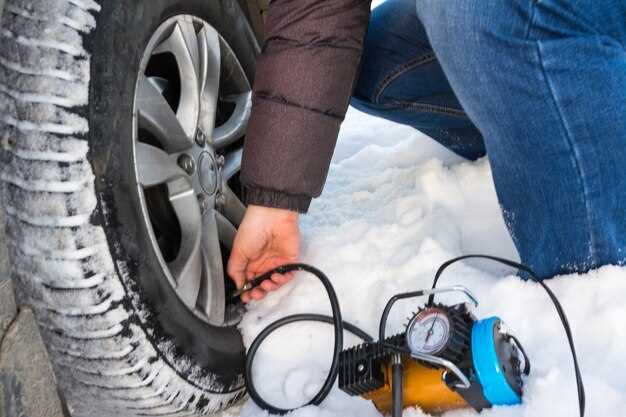

As the cold season comes to an end, many vehicle owners face the important task of storing winter tires properly. Ensuring that your tires are in optimal condition for the next winter is crucial, not only for performance but also for safety on snowy and icy roads. This article provides essential tips and techniques for effectively storing your winter tires during the off-season.
When considering the best storage methods for your winter tires, it is vital to take into account factors such as temperature, humidity, and how you choose to stack or hang them. Improper storage can lead to tire damage, which may compromise their integrity and effectiveness when you need them the most. These best practices will help extend the lifespan of your tires and ensure that they are ready to perform when winter returns.
From cleaning and inspecting your tires to selecting the right environment and packaging methods, each step plays a significant role in preserving tire quality. Follow our comprehensive guide to discover expert tips on tire storage and to ensure a hassle-free transition to and from the winter driving season.
[Choosing the Right Storage Environment for Winter Tires]
![[Choosing the Right Storage Environment for Winter Tires]](https://www.motor-prime.com/wp-content/uploads/2025/06/how-to-store-winter-tires-in-off-season-cpnq8ff1.jpg)
When it comes to storing winter tires off-season, selecting the appropriate environment is crucial for maintaining their performance and longevity. Here are some essential tips to ensure your tires remain in optimal condition until the next winter season.
First, the storage area should be cool and dry. Excessive heat and humidity can lead to the degradation of the rubber compounds in the tires. A temperature range between 50°F and 70°F (10°C to 21°C) is ideal for preserving the tire integrity. Make sure to avoid areas such as attics or basements that may experience temperature fluctuations.
Second, keep your tires away from direct sunlight to prevent UV damage. Sunlight can cause the rubber to crack and deteriorate over time. If possible, store tires in a dark space or cover them with a protective tarp to block exposure to light.
Next, ensure that the storage area is free from chemicals and solvents. Tires are susceptible to damage from various substances such as oil, gasoline, and other harsh chemicals. Opt for a clean, uncontaminated environment where the tires can rest without any adverse interactions.
It’s also important to consider the position of the tires during storage. If tires are mounted on wheels, store them upright to prevent deformation. If you have unmounted tires, stack them vertically to maintain their shape. Avoid placing heavy objects on top of the tires, as this can lead to flat spots and compromise structural integrity.
Lastly, remember to periodically check the condition of your winter tires throughout the storage period. Inspect for signs of wear, cracks, or bulges. Addressing any issues promptly will help extend the life of your tires and ensure they are ready for use when winter returns.
Preparing Winter Tires for Storage: Cleaning and Inspection
Properly preparing your winter tires for storage is essential to ensure their longevity and performance for the next season. Begin the process by cleaning each tire thoroughly. Use a mild soap solution and a soft brush to remove dirt, mud, and road salt that may have accumulated during winter driving. Rinsing them with clean water will help eliminate any remaining residues.
After cleaning, inspect the tires for any signs of damage. Check for cracks, bulges, or significant wear in the tread. Pay attention to the depth of the tread; if it is worn down significantly, it may be time to consider replacing the tires. Additionally, examine the sidewalls for any punctures or imperfections that could compromise the integrity of the tires.
It’s also important to check the tire pressure before storing. Properly inflated tires will maintain their shape better during storage. Ensure each tire is inflated to the manufacturer’s recommended pressure before placing them in storage.
Finally, if you’re using tire bags, ensure that they are clean and dry before placing the tires inside. This will help prevent moisture buildup and potential mold growth. By following these tips, you can effectively prepare your winter tires for storage and extend their lifespan until they are ready to be used again.
Best Practices for Tire Storage: Stacking vs. Hanging

When it comes to tire storage, choosing the right method can prolong the life of your tires and ensure they remain in good condition during the off-season. Two common techniques for storing tires are stacking and hanging, each with its own set of advantages and considerations.
Stacking Tires is a popular choice for many individuals. When tires are stacked, it is essential to keep them upright, as this prevents deformation. Ideally, tires should not be kept stacked for extended periods, especially if they are mounted on rims. If you decide to stack your tires, use a method that allows for proper ventilation and avoid placing heavy objects on top. Additionally, consider a protective cover to shield them from dust and moisture.
Hanging Tires offers an alternative that can help avoid some of the issues associated with stacking. Hanging tires on hooks or tire racks can minimize the risk of flat spots and deformation. This method also promotes better airflow, reducing the likelihood of moisture accumulation and mold growth. Ensure that the suspension of the tires is secure and that they can bear the weight without causing any damage. When hanging tires, remove any moisture and clean the tire surface to maintain long-term storage quality.
In conclusion, both stacking and hanging have their merits, but the choice ultimately depends on your available space and specific circumstances. Whichever method you choose, following these tips will contribute to optimal tire storage and enhance the longevity of your tires.






